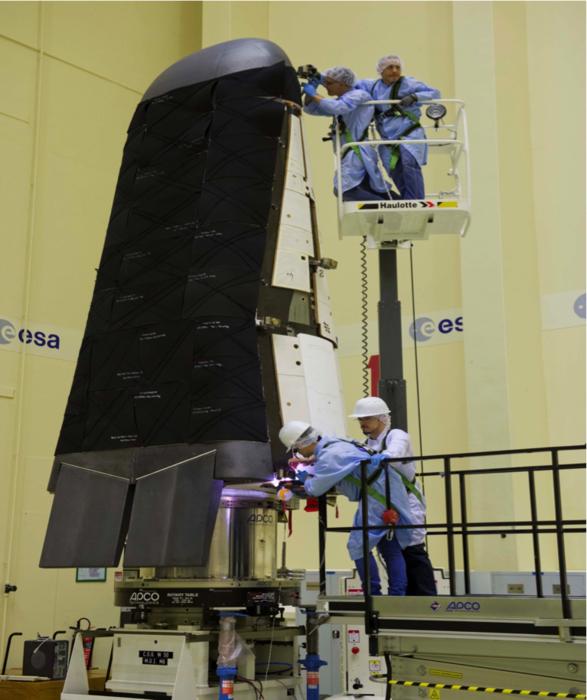Final tests are being done on ESA’s Intermediate eXperimental Vehicle, IXV, launched in early November, to make sure that it can withstand the demanding conditions from liftoff to separation from Vega. IXV will flight test the technologies and critical systems for Europe’s future automated reentry vehicles returning from low orbit.

IXV tests. Credit: ESA
“The technical advancements that have been made since the first experiments with our Atmospheric Reentry Demonstrator in 1996 are huge,” said Jose Longo, ESA’s head of aerothermodynamics. “This is the first flight demonstration of features such as highly advanced thermal structures: thrusters and flaps that are part of the control system, and the 300 sensors and infrared camera to map the heating all along the spacecraft from the nose to the flaps. These things just cannot be tested in the same way in laboratories.”
Launched into a suborbital trajectory on ESA’s small Vega rocket from Europe’s Spaceport in French Guiana, the vehicle will return to Earth as though from a low-orbit mission. For the first time, it will test and qualify European critical reentry technologies in hypersonic flight, descend by parachute and land in the Pacific Ocean to await recovery and analysis. Credit: ESA
IXV weighs almost two tons, close to Vega’s lifting capacity, and will be a tight fit inside the vehicle’s fairing. When IXV splashes down in the Pacific at the end of its mission it will be recovered by ship and returned to Europe for detailed analysis to assess the performance and condition of the internal and external structures. The actual performance will be compared with predictions to improve computer modelling of the materials used and the spaceplane’s design.
“In this mission we are not only monitoring the spacecraft all along its autonomous flight, but also tracking its progress back to Earth to a particular spot – this is different to what we are used to,” said Giorgio Tumino, ESA’s IXV project manager.
Source: ESA






Comments